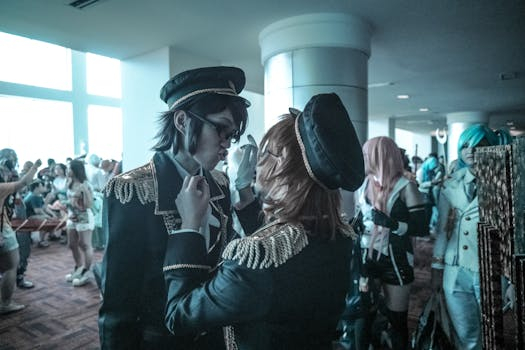The Influence of Subcultures on Mainstream Fashion
The fashion industry is constantly evolving, with new trends emerging year after year. While mainstream fashion often receives the most attention, there is no denying that subcultures have a significant influence on the runway and everyday fashion. Subcultures refer to a group of people who have different beliefs, values, and interests than those of mainstream society. Their unique sense of style and expression has had a significant impact on mainstream fashion, shaping trends and breaking traditional norms. In this article, we will delve into the influence of subcultures on mainstream fashion, exploring how these communities have helped push boundaries and redefine what is considered fashionable.
The Rise of Streetwear
One of the most notable ways subcultures have impacted mainstream fashion is through streetwear. Originating in the skateboarding and hip-hop scenes in the 1980s and 1990s, streetwear was the antithesis of traditional high fashion. It was affordable, functional, and most importantly, represented a sense of rebellion and individuality. Streetwear brands like Supreme, Stussy, and A Bathing Ape gained a cult following among subculture communities, with limited edition drops and collaborations selling out within minutes.
The popularity of streetwear among subcultures eventually caught the attention of mainstream fashion designers, leading to collaborations and crossovers between high fashion and streetwear brands. This blurring of lines between subculture and mainstream fashion can be seen in luxury brands like Louis Vuitton collaborating with streetwear giant Supreme and Gucci collaborating with Dapper Dan, a Harlem-based tailor known for his luxury custom streetwear pieces.
The Impact of Music
Music and fashion have always had a close relationship, with musicians often influencing fashion trends. Subcultures, in particular, have a strong connection with music, and their unique styles often reflect the genre of music they associate with. For example, the punk subculture’s bold and rebellious style reflects the music’s energy and attitude, with elements like leather jackets, safety pins, and ripped jeans being staples in their wardrobe.
This connection between subcultures and music has had a significant impact on mainstream fashion, with designers drawing inspiration from various music genres and incorporating it into their designs. One of the most iconic examples of this is the grunge era of the 1990s, where bands like Nirvana and Pearl Jam brought their Seattle grunge style to the mainstream, with flannels, distressed denim, and combat boots becoming popular fashion choices.
Inclusivity and Diversity
Subcultures have also played a vital role in promoting inclusivity and diversity in the fashion industry. Many subcultures represent marginalized communities, and through their fashion choices, they encourage acceptance and representation. The punk subculture, for example, challenged traditional gender norms with androgynous fashion choices, while the goth subculture embraced body modifications and unconventional beauty standards.
As the fashion industry continues to make progress towards inclusivity and diversity, subcultures have played a crucial role in pushing for change. Mainstream fashion designers are now incorporating more diverse models and styles into their collections, inspired by the subculture communities that have been doing it for years.
The Power of Social Media
In today’s digital world, social media has become a powerful tool for subcultures to showcase their unique fashion styles and gain widespread recognition. Platforms like Instagram and TikTok have given subculture communities a platform to connect, collaborate, and promote their fashion choices to a broader audience. This has helped subcultures gain more visibility and influence in the fashion industry, with mainstream fashion brands taking note and incorporating elements of subculture fashion into their designs.
In Conclusion
It is clear that subcultures have had a significant impact on mainstream fashion, challenging traditional norms and shaping trends. Their unique sense of style and expression has brought diversity, inclusivity, and individuality to the fashion industry. As subcultures continue to evolve and influence fashion, it is safe to say that their impact will continue to be felt in the years to come.








